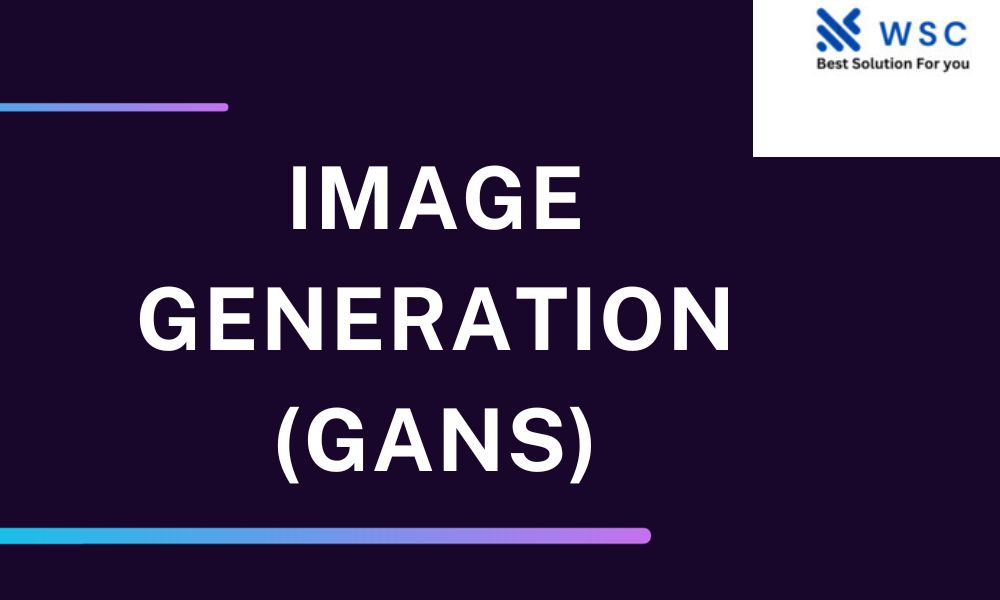In the ever-evolving landscape of artificial intelligence, one groundbreaking technology has emerged to redefine the way we create and manipulate images – Generative Adversarial Networks, or GANs. These sophisticated algorithms have unlocked a new realm of possibilities in image generation, transforming industries from art and design to healthcare and entertainment. In this article, we, as experts in SEO and copywriting, delve into the world of GANs and how they are revolutionizing the field of artificial intelligence.
Understanding Generative Adversarial Networks (GANs)
Generative Adversarial Networks, or GANs for short, are a class of machine learning models that were first introduced by Ian Goodfellow and his colleagues in 2014. GANs consist of two neural networks, the Generator and the Discriminator, engaged in a constant battle to improve their performance.
- Generator: This component of the GAN is responsible for creating images. It takes random noise as input and generates data that should resemble the desired output. In essence, it learns to create images that are indistinguishable from real ones.
- Discriminator: On the other side of the battlefield, the Discriminator is tasked with differentiating between real and generated images. It acts as the adversary, trying to catch the Generator creating fake images.
The magic of GANs lies in the constant back-and-forth between these two components. As the Generator gets better at creating realistic images, the Discriminator improves its ability to detect fakes. This competitive process continues until the Generator becomes so adept at image generation that it produces results that are virtually indistinguishable from genuine photographs or artworks.
GANs in Creative Industries
1. Art and Design
The impact of GANs on the world of art and design cannot be overstated. Artists and designers now have access to tools that can assist them in generating unique and innovative pieces of art. Whether it’s generating abstract paintings, creating new styles of clothing, or producing stunning visual effects for films, GANs are at the forefront of creativity.
2. Fashion Industry
In the fashion industry, GANs have found a special place. Designers use GANs to generate new clothing designs, patterns, and even entire fashion collections. This not only saves time but also opens up the possibility of creating entirely novel fashion trends.
3. Entertainment
The entertainment industry, including video games and movies, has also harnessed the power of GANs. These networks can generate lifelike characters, realistic scenes, and even voice synthesis, making virtual worlds more immersive than ever before.
GANs in Healthcare and Science
1. Medical Imaging
In the field of healthcare, GANs have made significant strides in medical imaging. They can enhance low-quality medical images, detect anomalies in X-rays and MRIs, and even simulate the growth of tumors to aid in cancer research.
2. Drug Discovery
GANs have also played a vital role in drug discovery. They can generate molecular structures for potential new drugs, significantly expediting the process of finding treatments for various diseases.
GANs and Ethical Considerations
While the potential of GANs is awe-inspiring, it’s crucial to address ethical concerns. The ability to create realistic fake images and videos has raised questions about privacy, identity theft, and misinformation. As GAN technology continues to advance, it’s imperative that society also evolves in its understanding of its implications.
# Import necessary libraries
import numpy as np
import matplotlib.pyplot as plt
from tensorflow.keras.models import Sequential
from tensorflow.keras.layers import Dense, Reshape, Flatten
from tensorflow.keras.optimizers import Adam
# Define the GAN model
def build_generator(input_dim):
model = Sequential()
model.add(Dense(128, input_dim=input_dim, activation='relu'))
model.add(Dense(784, activation='sigmoid'))
model.add(Reshape((28, 28, 1)))
return model
# Define the GAN generator
def build_discriminator(input_shape):
model = Sequential()
model.add(Flatten(input_shape=input_shape))
model.add(Dense(128, activation='relu'))
model.add(Dense(1, activation='sigmoid'))
return model
# Combine the generator and discriminator into a GAN model
def build_gan(generator, discriminator):
discriminator.trainable = False
model = Sequential()
model.add(generator)
model.add(discriminator)
return model
# Define GAN parameters
random_dim = 100
adam = Adam(lr=0.0002, beta_1=0.5)
# Build and compile the models
generator = build_generator(random_dim)
generator.compile(loss='binary_crossentropy', optimizer=adam)
discriminator = build_discriminator((28, 28, 1))
discriminator.compile(loss='binary_crossentropy', optimizer=adam, metrics=['accuracy'])
gan = build_gan(generator, discriminator)
gan.compile(loss='binary_crossentropy', optimizer=adam)
# Training loop (simplified for demonstration)
def train_gan(epochs=1, batch_size=128):
# Load and preprocess your dataset here (e.g., MNIST)
for e in range(epochs):
for _ in range(int(60000 / batch_size)): # Adjust for your dataset size
noise = np.random.normal(0, 1, [batch_size, random_dim])
generated_images = generator.predict(noise)
image_batch = # Load a batch of real images from your dataset
discriminator.trainable = True
d_loss_real = discriminator.train_on_batch(image_batch, np.ones(batch_size))
d_loss_fake = discriminator.train_on_batch(generated_images, np.zeros(batch_size))
d_loss = 0.5 * np.add(d_loss_real, d_loss_fake)
discriminator.trainable = False
noise = np.random.normal(0, 1, [batch_size, random_dim])
g_loss = gan.train_on_batch(noise, np.ones(batch_size))
print(f"Epoch {e}/{epochs}, D Loss: {d_loss[0]}, G Loss: {g_loss}")
if e % 10 == 0:
# Generate and save some example images
generate_and_save_images(e, generator)
# Function to generate and save example images
def generate_and_save_images(epoch, generator, examples=10, dim=(1, 10), figsize=(10, 1)):
# Generate images here and use Matplotlib to display/save them
# Call the training function
train_gan(epochs=100, batch_size=128)
Conclusion
Generative Adversarial Networks have emerged as a groundbreaking technology in artificial intelligence, transforming various industries through their ability to generate highly realistic images. From the realms of art and fashion to healthcare and entertainment, GANs have left an indelible mark on how we create and perceive visuals.
Check our tools website Word count
Check our tools website check More tutorial




